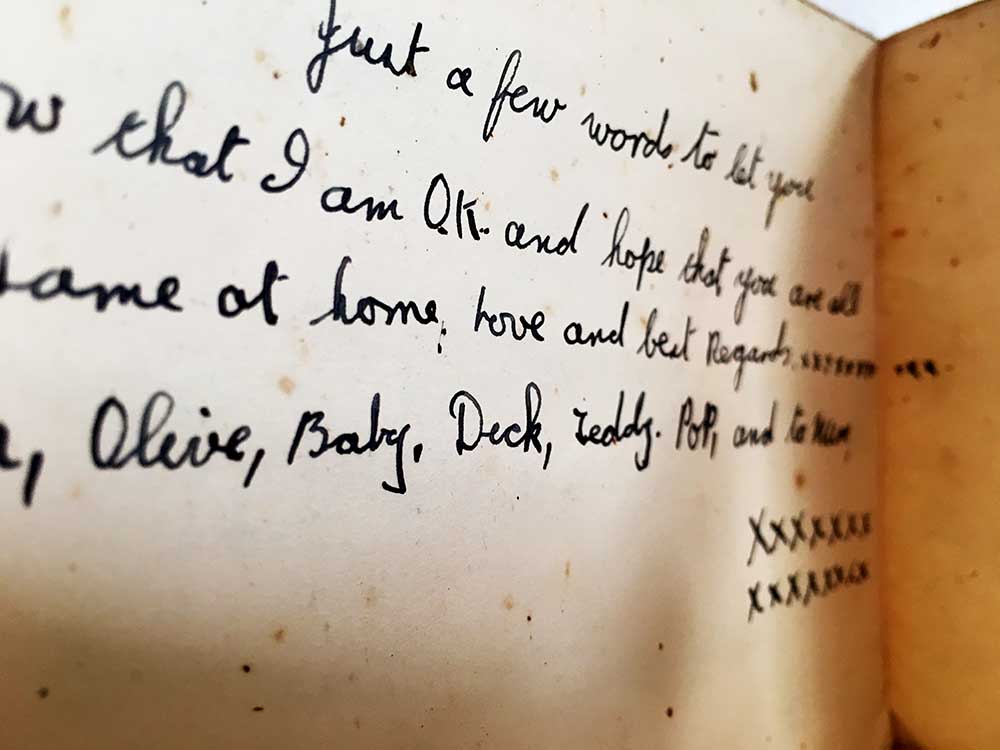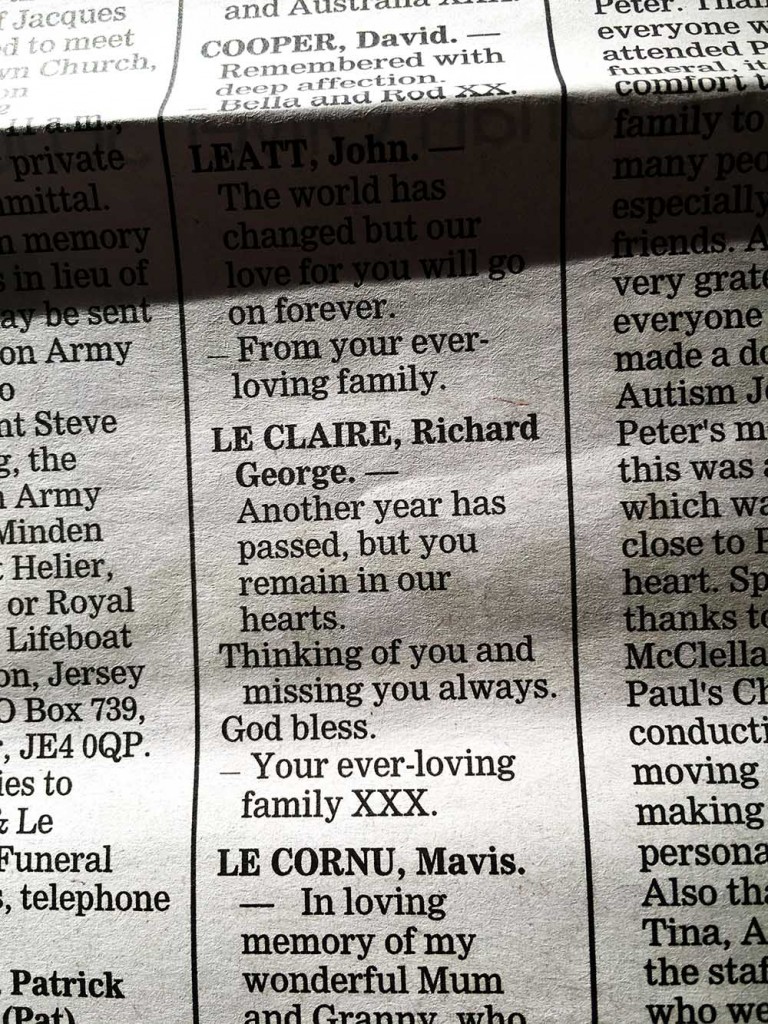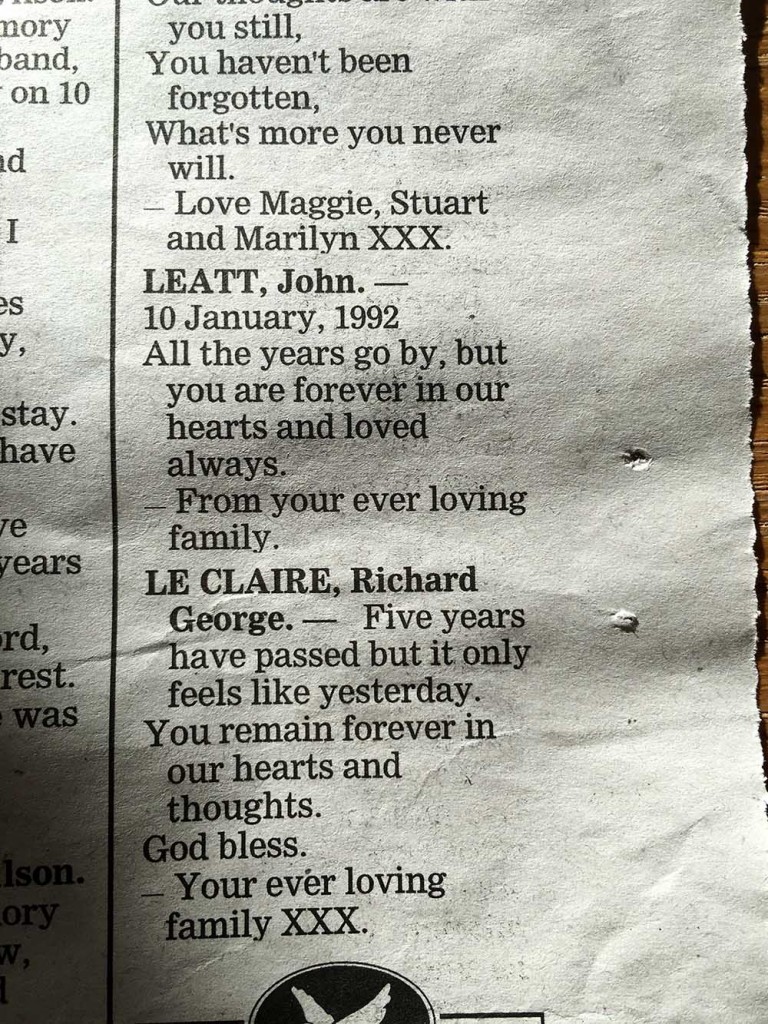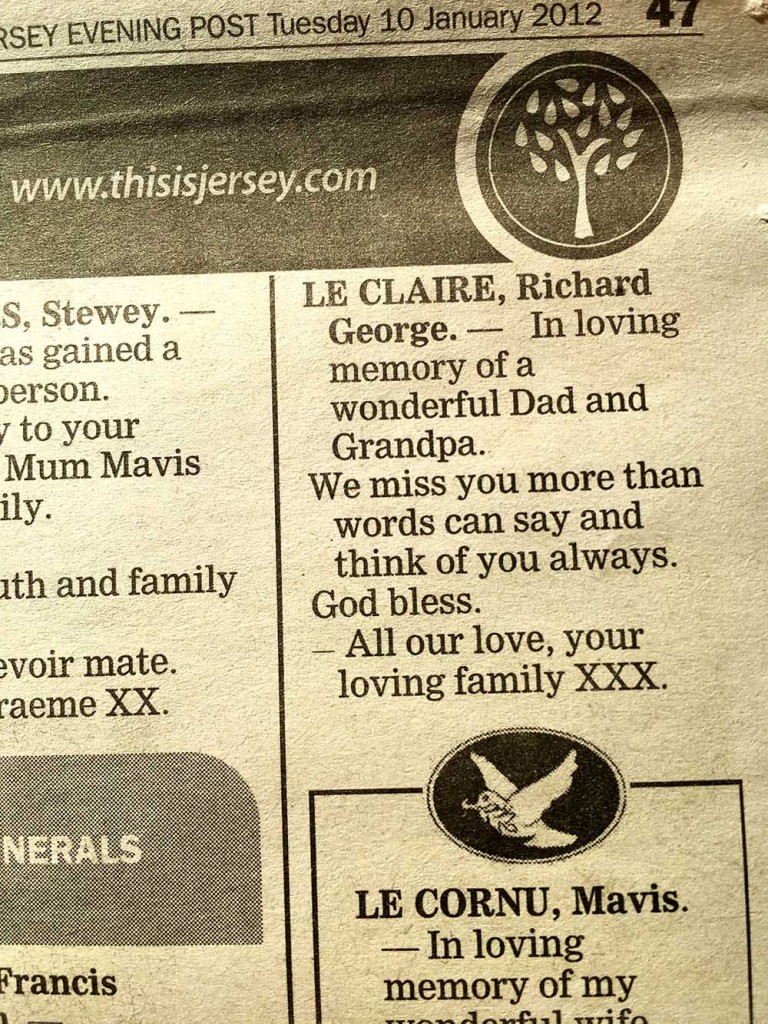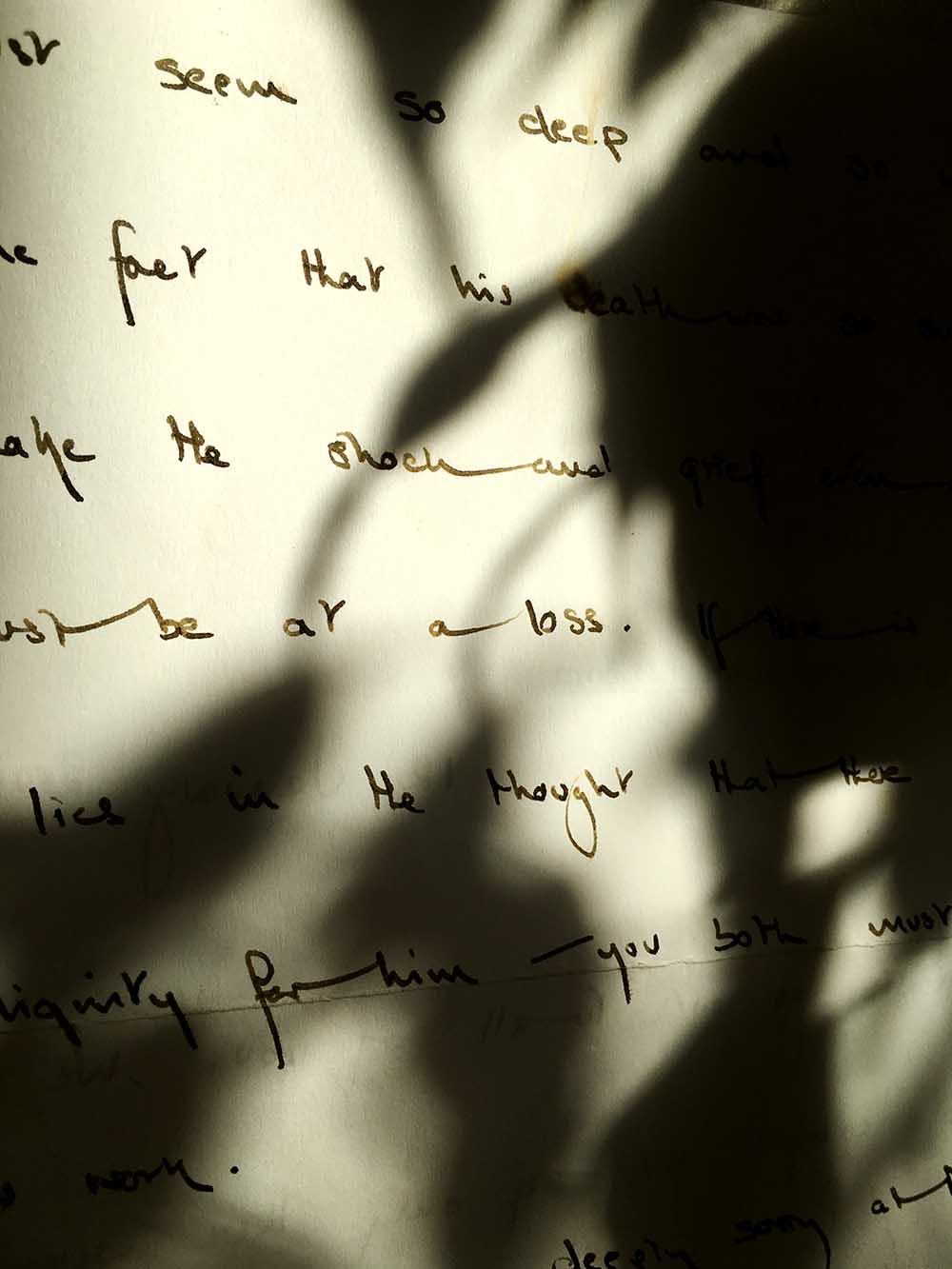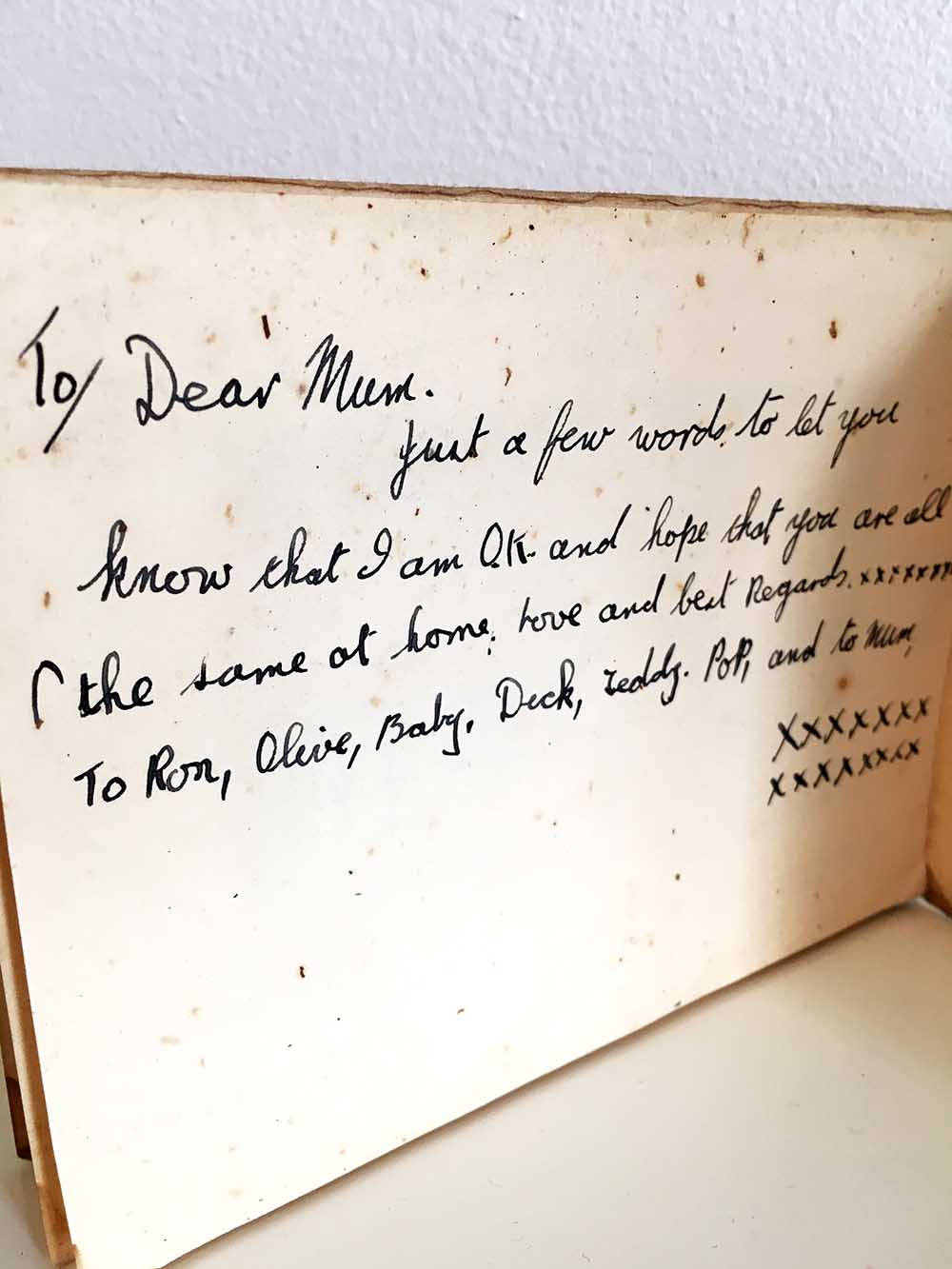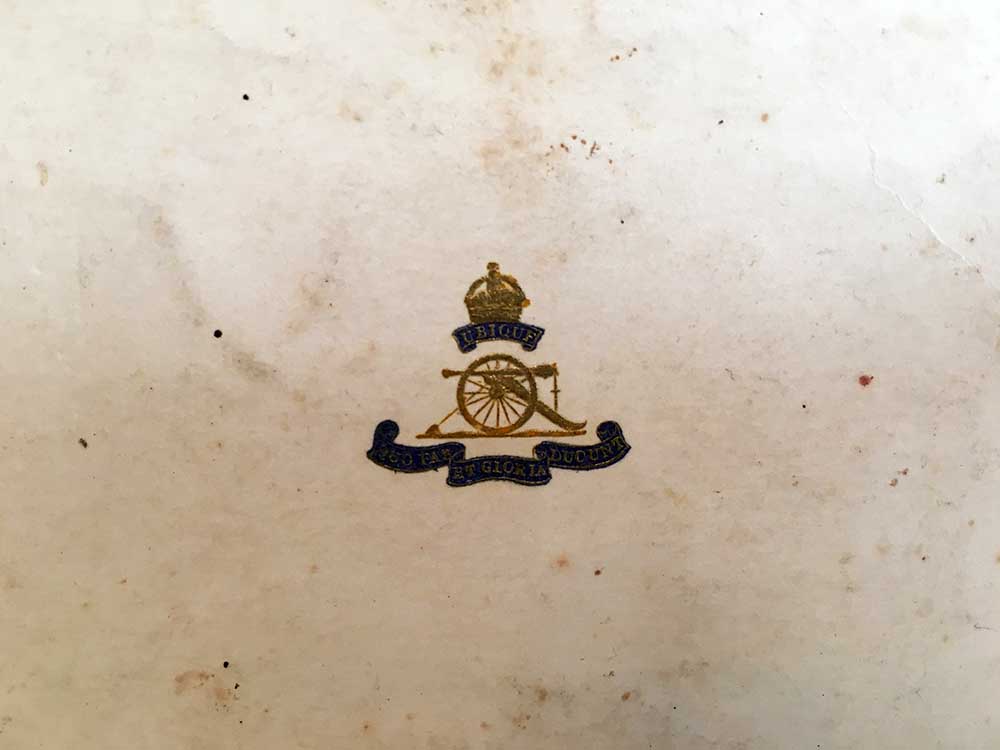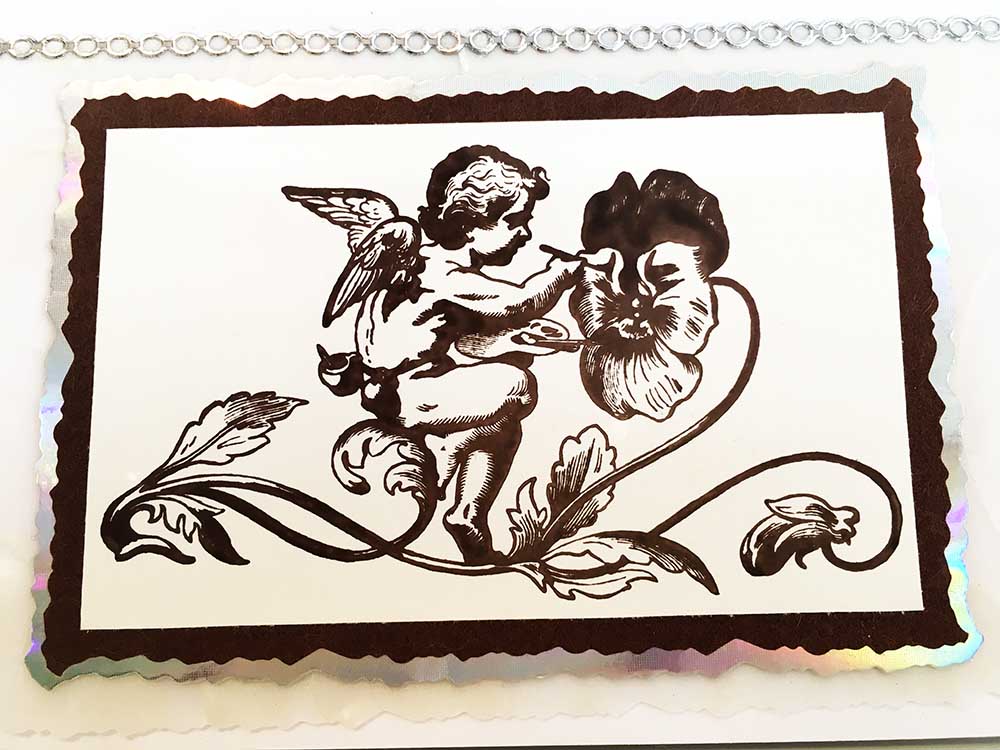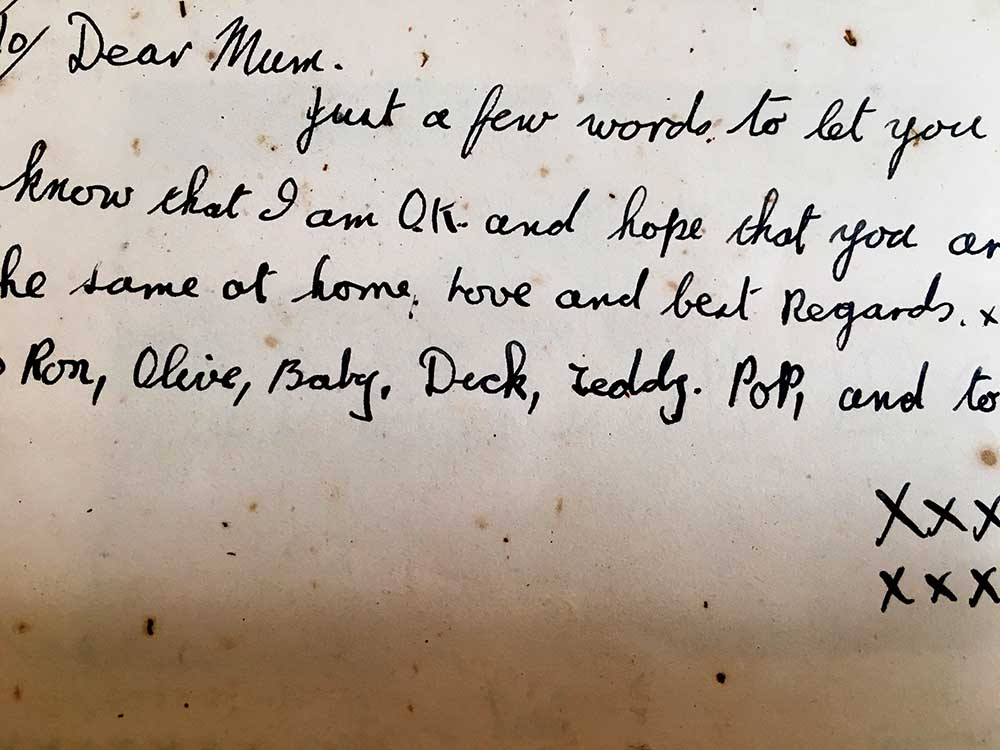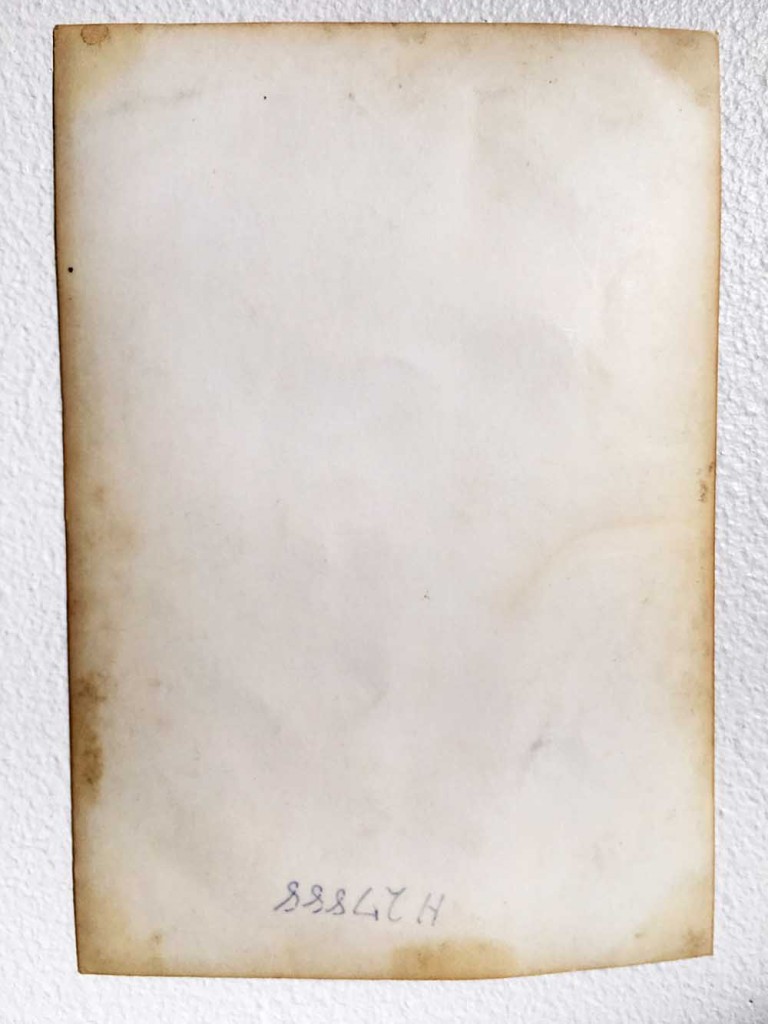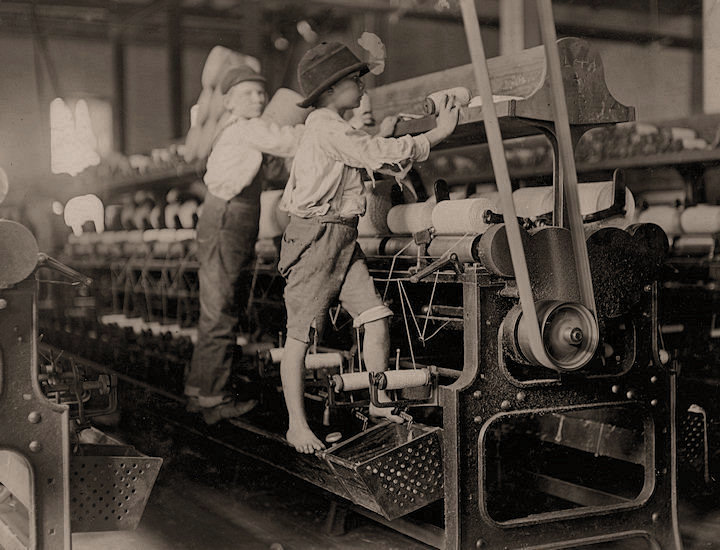Recording two- personal items:
For my second shoot I decided to photograph my grandfather’s possessions or items related to him that my mother has kept. I found lots of condolence cards and letters addressed to my family, offering their sympathy and sorrow. The first photograph is of a small card/postcard addressed to my grandfather’s mother from my grandfather and his siblings. I especially liked this item because of the old style writing and the colour of the paper. I think it is very vintage and shows the heritage of my grandfather’s life in an image. It is also due to its beautiful simplicity, it is just a casual piece of writing, filling their mother in on their well-being. My mother has written a small memorial message in the JEP for the past ten years. Each year she has kept the newspaper in order to keep my grandfather’s memory alive. I selected a small number of items which I thought represented and symbolised my grandfather as a memory. The third image is of a letter my mother received from my father’s parents.
I took inspiration from my artist references regarding the different styles and ideas of taking images to represent someone who is invisible. One of the ideas was to photograph not only the front of archival images but also to photograph the back of the image as it normally has some sort of writing of information like the date it was taken, who was in the photograph or even the occasion. It is also interesting because it reveals more information then the photograph could. The discolouring of the back of the image brings a vintage sort of feel and gives the photograph life and heritage. Furthermore, the actual style and design shows the time which the photograph was produced, the photograph with the date ‘May 31st 1993’ is a much more recent photograph possibly produced in a group, whereas, the one above is much older and has more history and depth to it.

